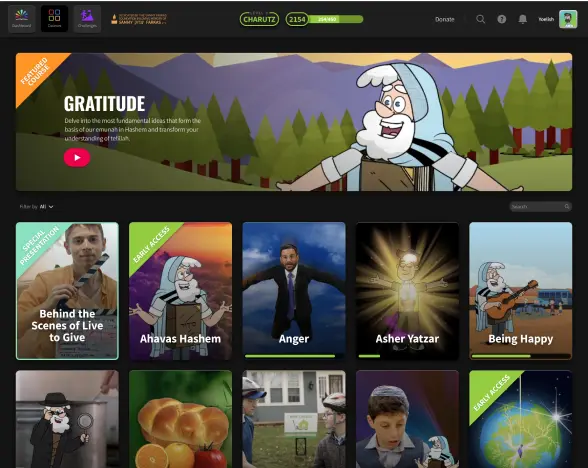
Adjusting Emunah and Tefillah to Your Classroom
This blog post is part of a series on tips for teaching Emunah and Tefillah in the classroom. Previous tips can be found here and here. Sign up for our newsletter to get notified when the next tip comes out.
At Torah Live, we put a lot of effort into creating lessons and workbooks that accompany our video presentations. We do this to allow educators to easily enrich their students knowledge and encourage critical thinking. Since not all classes are the same, we often hear from teachers that they have adapted our lessons and changed them to fit their students’ needs.
One example of this is in videos 2 and 3 of the Ezra & Lauren Kest Emunah and Tefillah Project. The accompanying lesson can be a bit heavy for some students. After all, we are asking a big question that the majority of human beings don’t often think about:
“What are we here for?”
The way we have set up the lesson, the teacher begins by engaging the students on the topic of directions and destination. He or she points out that in order to know where you’re going you need directions.
After viewing the videos 2 and 3, the students are asked to answer the following question (page 5 of the workbook):
Write down what you would like to be said at your funeral.
This is a dramatic question, not one that most students would expect to see in their workbook. This question forces them to think forward, way beyond their age and reality, and reflect on what kind of lives they want to live.
While many teachers have found this exercise to profoundly move their students, one teacher found that her class was resistant to answering, since the students couldn’t come to terms with the context of the question.
The teacher did not give up. Instead, she challenged them the next day with a similar question: “What would your grandchildren say about you at your 70th birthday party?” This question generated a very different response from her students. The answers were read aloud and this led to a productive conversation about the most common characteristics mentioned and the concept of prioritizing life values.
While numerous educational experts spent countless hours developing top-quality content for the Emunah and Tefillah series, it is ultimately up to the teacher to adjust the lessons to his or her classroom. We welcome your tips and tricks on making this series more meaningful for students. Please comment below or email us at info@torahlive.com.


